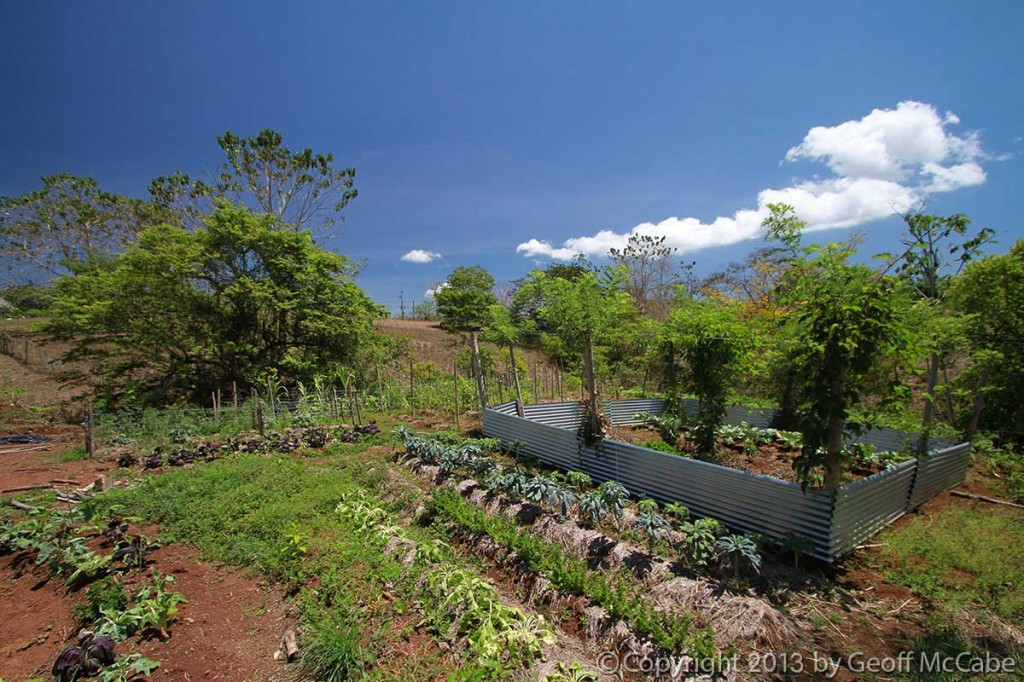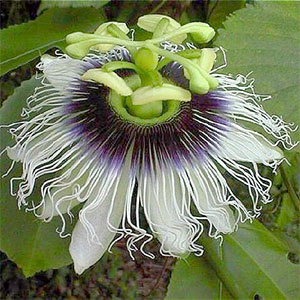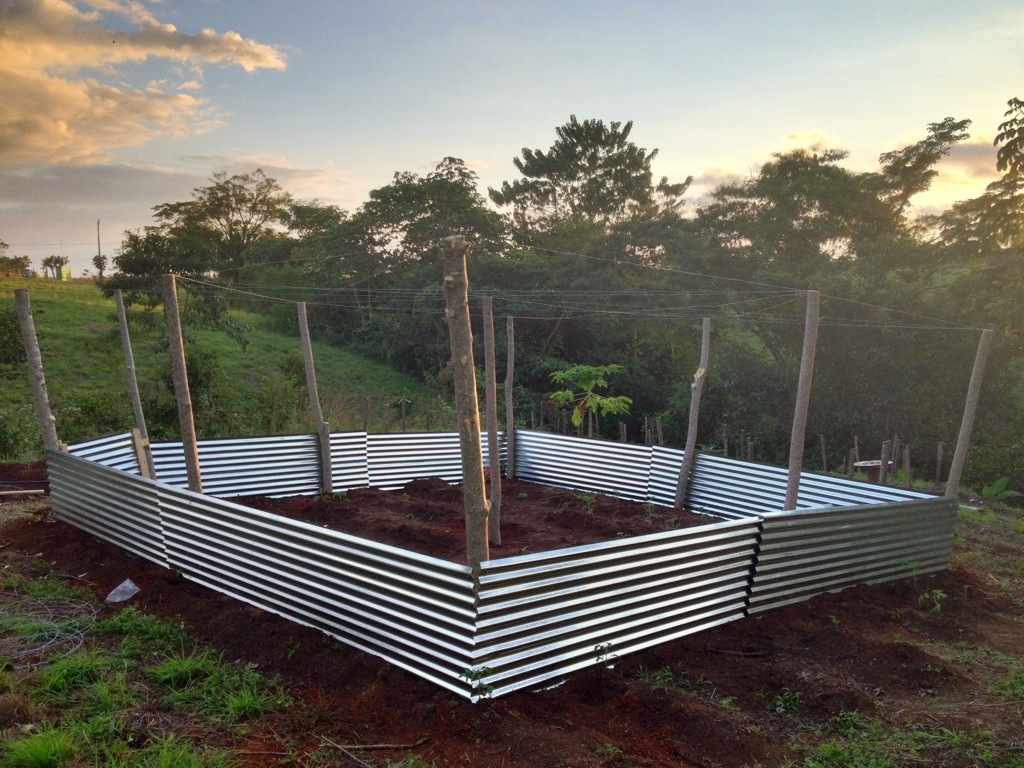Living Shade Garden Unit
When I discovered that “grillos” (grasshoppers) were killing our baby tomatoe seedlings, I needed to think up a solution fast, so we built this “living shade structure” in one day.
The result was this structure, which uses the following materials:
8 sheets of corrogated tin (3.6m)
9 madera negro living fenceposts (3 meters)
2 rolls of galvanized steel wire
Nails
Total cost: $300 for materials
Size: 7m x 7m = 550 ft2
The project was built in one day by two workers.
Pest Prevention – How does it work?
The tin is only a meter high, so won’t the grasshoppers just fly over it? Well, in 2004, I was told by a Tico farmer who lived in Cabuya, that grasshoppers don’t fly very high… they rarely HOP over 1m in height. So this, simple low structure will prevent the majority of them from getting in. Pretty clever, right? Can’t say I invented that idea, but was fortunate to remember it after eight years.
Another way it prevents prevents pests is by blocking our mortal (but supposedly tasty) enemies, the IGUANAS, who love to feast on all veggies. These miniature dinosaurs, growing up to nearly 6 feet long, are the Tyrannasauras Rexes of the garden. Just ONE Of them ate our entire patch of watermelon earlier in the year! Our design is also angled slightly outward to help prevent them from climbing over it.
Benefit of the angled posts
Besides making the wall more difficult for hungry veggie-killing lizards to climb over, it has a second benefit, which is that the shade up above is larger than the garden itself, which is better for the plants inside. Most veggies in Costa Rica will grow better with partial shade.
Where’s the shade?
Strung between the posts is a web of galvanized steel wire. We used galvanized because it doesn’t rust, so will last much longer than other wire. We could probably also use a plastic twine.
Tomorrow we will plant a few species of vines that produce fruit or are edible, such as:
Malabar Spinach – Edible leaf vine that we have discovered grows very well here
Passion Fruit – The “Maracuya” vine produces one of the world’s tastiest fruits
Granadilla – Large green fruit and giant purple flowers which grows quickly.
Cucumber – Yes the “pepino” can grow vertically, and they will hang down in the air, keeping them away from some types of ground-dwelling pests.
So, we’ll plant them all and let them compete in the air, growing on top of each other, and providing dappled sunlight to the plants we’re growing inside the structure.
Oh, and eventually we’ll paint that outer wall green to cover it up… it’s UGLY. We’ll put some flowers around it too.

















